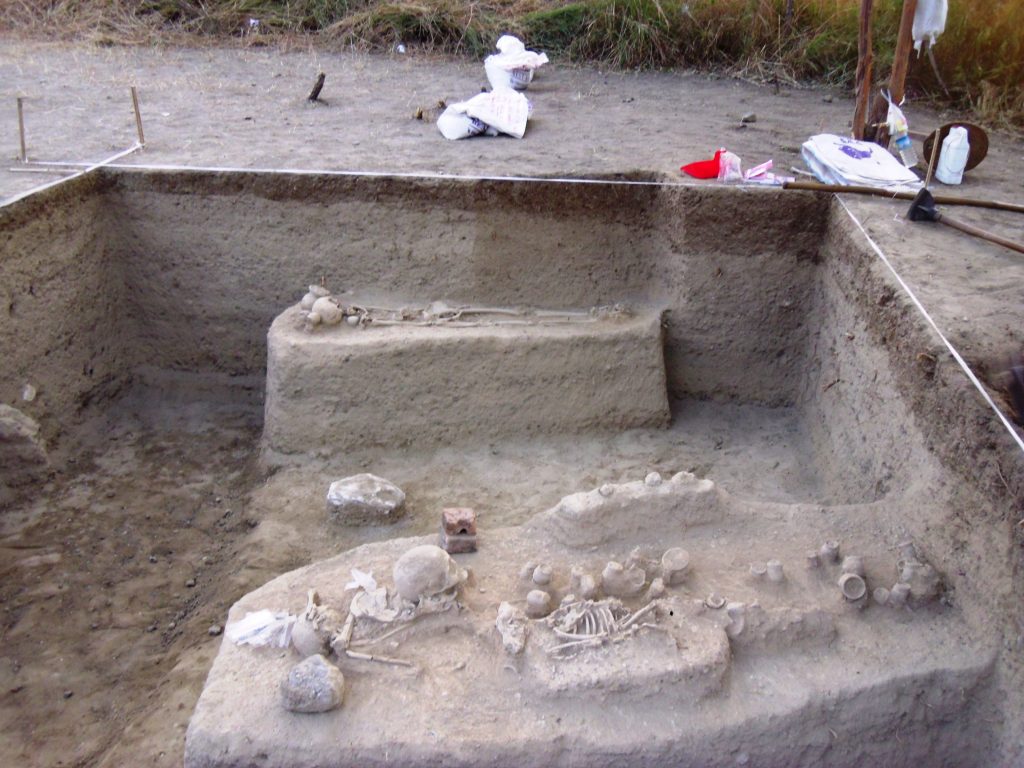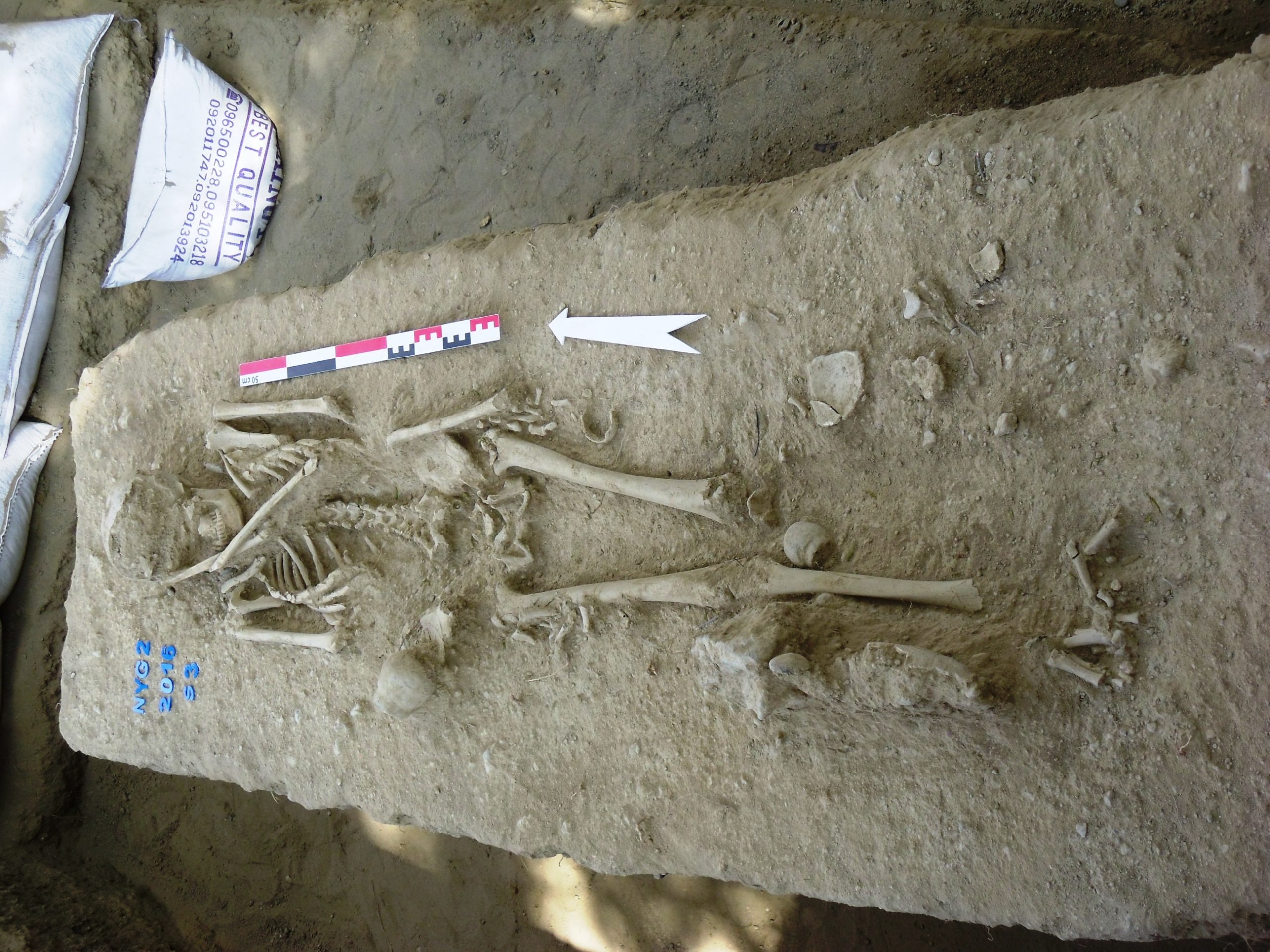Wednesday in Rangoon, a team of French and Burmese archaeologists unveiled new findings from a dig in Sagaing Division that offers new insights into life in Upper-Burma during the Bronze Age, over 5000 years ago. While much testing still needs to be done, the archaeologists said that the site could be the largest of its kind in all of Southeast Asia.
The excavations were carried out at Nyaung’gan village in Sagaing Division. The site has been the subject of several investigations by archaeologists from Mandalay University since the late 1980s.
Speaking to the media at the French Institute, the researchers said they were particularly interested in the evidence of a cemetery, where they found the preserved skeletons of 41 men, women, and children buried with ceremonial beads, blankets and pottery.
Additionally, they discovered the skull of a young child that appeared to show evidence of trepanation, a surgery to release fluid pushing against the brain. According to Dr Oliver Pryce, Director of the French Archaeological Mission in Myanmar, it could represent the earliest example of medical surgery ever found in the region.

As Dr Pryce explained during the press conference in Rangoon’s French Institute, many of the artefacts were found less than 30 centimetres below the surface of the ground. In many other Southeast Asian nations, where for decades farming has been done by tractors and other means that cut deep into the earth, any similar deposits have long since been destroyed.
However, in small communities like Nyaung’gan and many others around the country, farmers still rely on oxcarts to plough only the surface of their fields, leaving a wealth of new discoveries untouched. Already, the community found in Nyaung’gan appears to be much larger than similar Bronze Age discoveries in Vietnam and Thailand.
Archaeology is one of many fields that has seen heightened foreign interest and investment during the Burma’s ‘reform’ period of the past five years, with many foreign academics anxious to explore Burmese heritage that had been closed off for so long.
The treatment of ancient sites like Nyaung’gan has often proved to be a contentious issue. Some Western academics remain strongly opposed the Burmese government’s application for the ancient city of Bagan to become a UNESCO world heritage site, citing the fact that parts have been extensively rebuilt as recently at the 1980s.

Myat Myat Htwe)
Even at a local level, disagreements are common. In January, members of the Mrauk-U heritage trust in northern Arakan State have reported that the private companies leading restoration of the ancient city are in fact doing more harm than good.
While Wednesday’s press conference in Rangoon stayed focused on the team’s research, Dr Pryce did at one point press for a clear policy to protect the nation’s heritage.
“The Myanmar people should be proud of this site…they should also protect it.”



